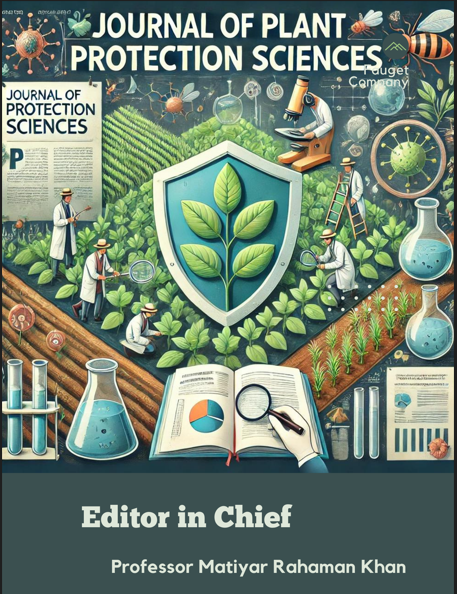Zoology Section, Biological Research Division, BCSIR Laboratories, Dhaka,Qudrat-E-Khuda Road, Dhanmondi, Dhaka-1205, Bangladesh
DOI:
https://doi.org/10.48165/Keywords:
Disease prediction model, weather parameters, Pestalotia psidii, Colletotrichum gloeosporioides, Botryodiplodia theobromae, Phytophthora nicotianae var parasiticaAbstract
The role of weather factors, such as temperature, total rainfall, number of rainy days and relative humidity on the development of diseases like canker (Pestalotia psidii), anthracnose and die back (Colletotrichum gloeosporioides), stem canker and dry fruit rot (Botryodiplodia theobromae) and Phytophtora fruit rot (Phytophthora nicotianae var Parasitica) of guava were analysed for predictive purpose from regression equations. The simple correlation coefficient matrix showed significantly positive correlation of canker severity with maximum relative humidity at 1% level whereas, anthracnose correlated well with minimum relative humidity, temperature and number of rainy days at 5% level.The negative correlation was obtained for stem canker and dry rot with all parameters at 1% significant level. In case of Phytophthora fruit rot, positive correlation was also recorded with all parameters, except maximum relative humidity.
References
Kumar, C.P.C. & Kumar, C.S.K. (2004). Epidemiological studies on Phytophthora fruit rot disease of betelvine. Indian Journal of Plant Protection, 32, 100-101.
Mathur, S., Bhatnagar, M.K., & Mathur, K. (1992). Occurrence and epidemiology of fruit rot of guava caused by Phytophthora nicotianae var. parasitica. Indian Phytopathology, 45, 217-220.
Mishra, N.K. (2006). Studies on some foliar diseases of guava (Psidium guajava L.) and their possible control measures. Ph.D. Thesis, BCKV, West Bengal, India, 136 pp.
Pandey, R.R., Arora, D.K., & Dube, R.C. (1997). Effect of environmental conditions and inoculum density on infection of guava fruits by Colletotrichum gloeosporioides. Mycopathology, 3, 165-172.
Peres, N.A.R., Kuramae, E.E., Dias, M.S.C., & Souza, N.L.-De. (2002). Identification and characterization of Colletotrichum spp. affecting fruit after harvest in Brazil. Journal of Phytopathology, 150, 128-134.
Ploetz, R.C., Zentmyer, G.A., Nishijima, W.T., & Rohrbach, K.G. (2003). Common pathogens of tropical fruits. In Diseases of Tropical Fruit Crops (CAB publication, New Delhi).
Singh, T.S. & Singh, G.P. (1982). Field evaluation of systemic and non-systemic fungicides for the control of powdery mildew of pea. Pesticides, 16, 19-20.
Thind, S.K. & Kaur, N. (2005). Status of grape anthracnose in Punjab. Journal of Mycology and Plant Pathology, 35, 116-117.

